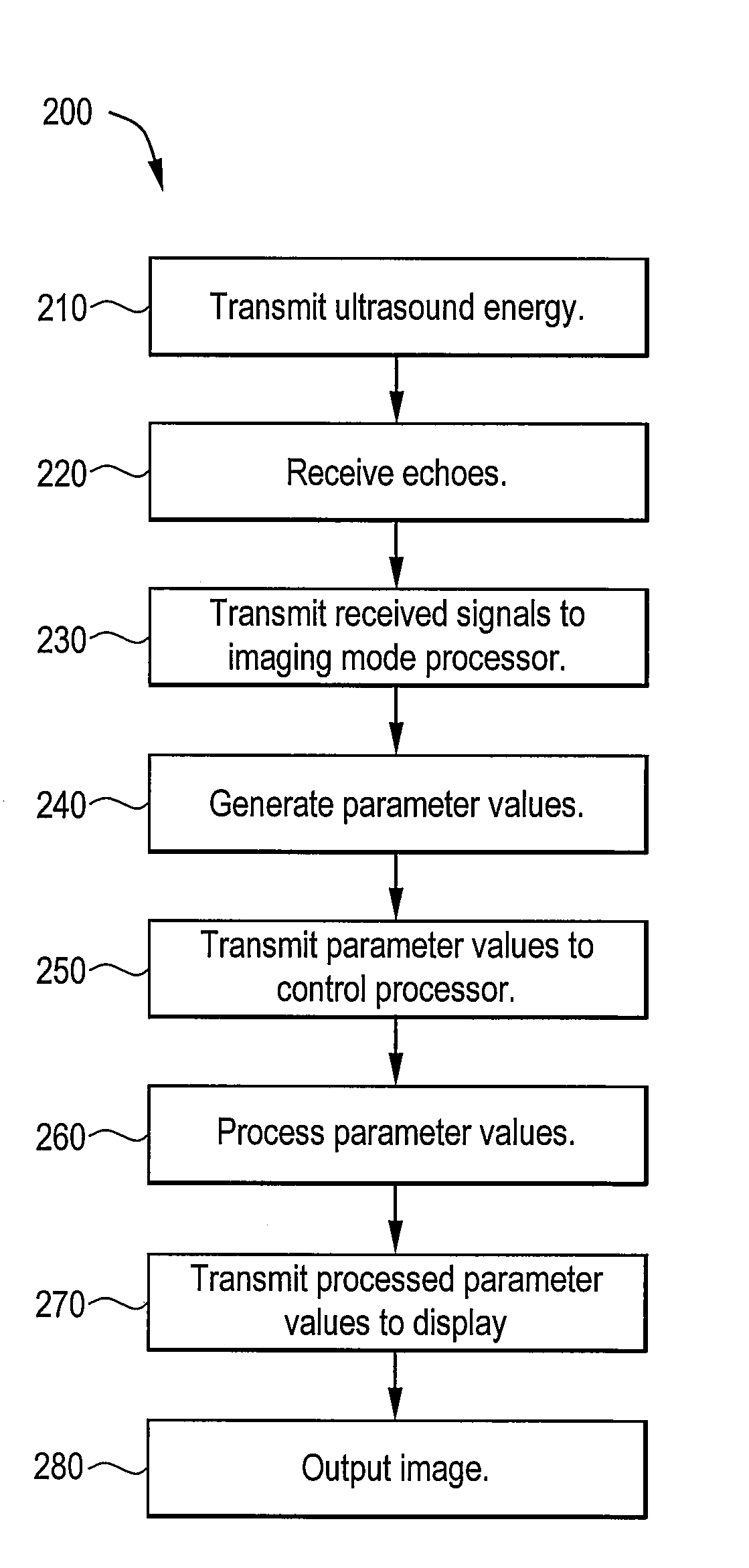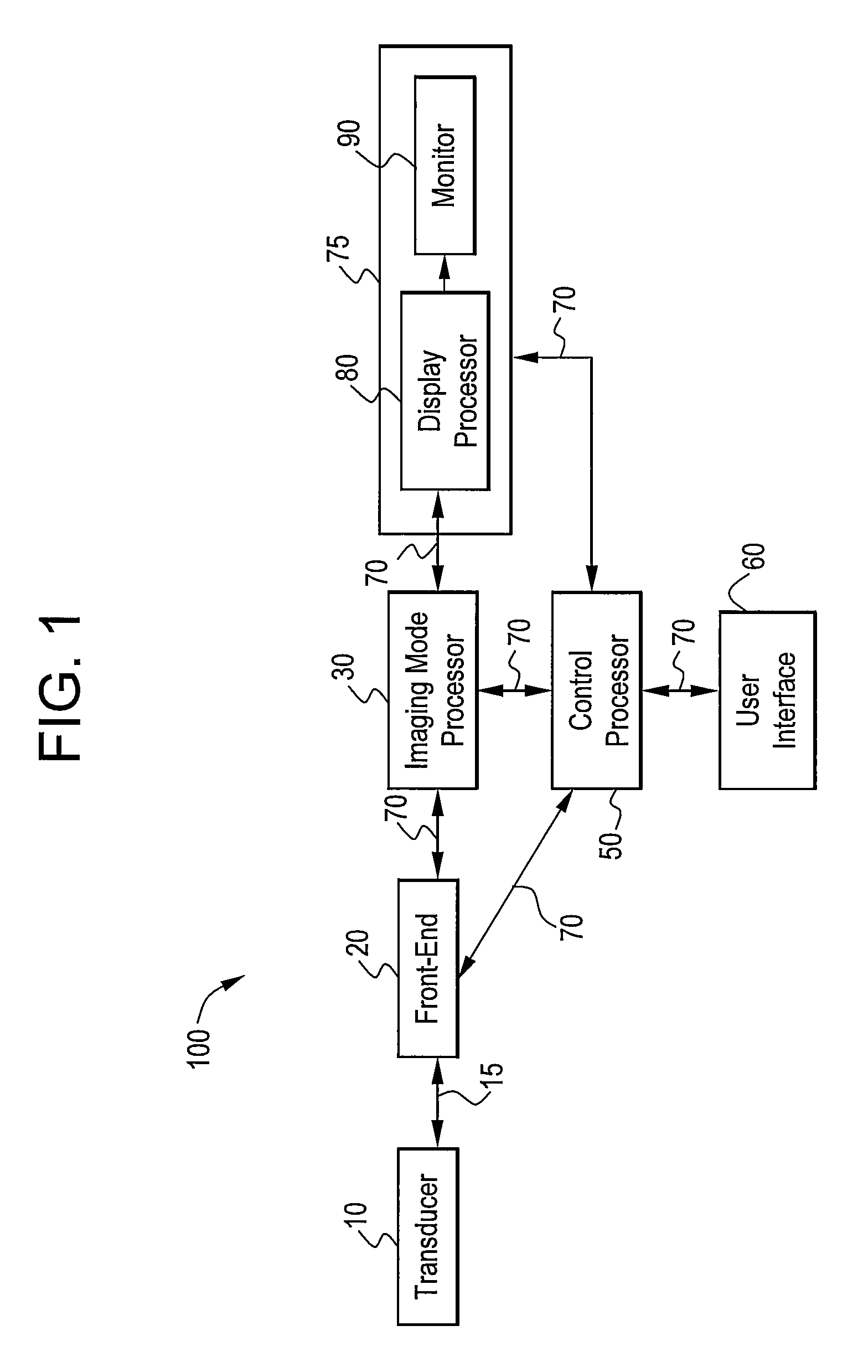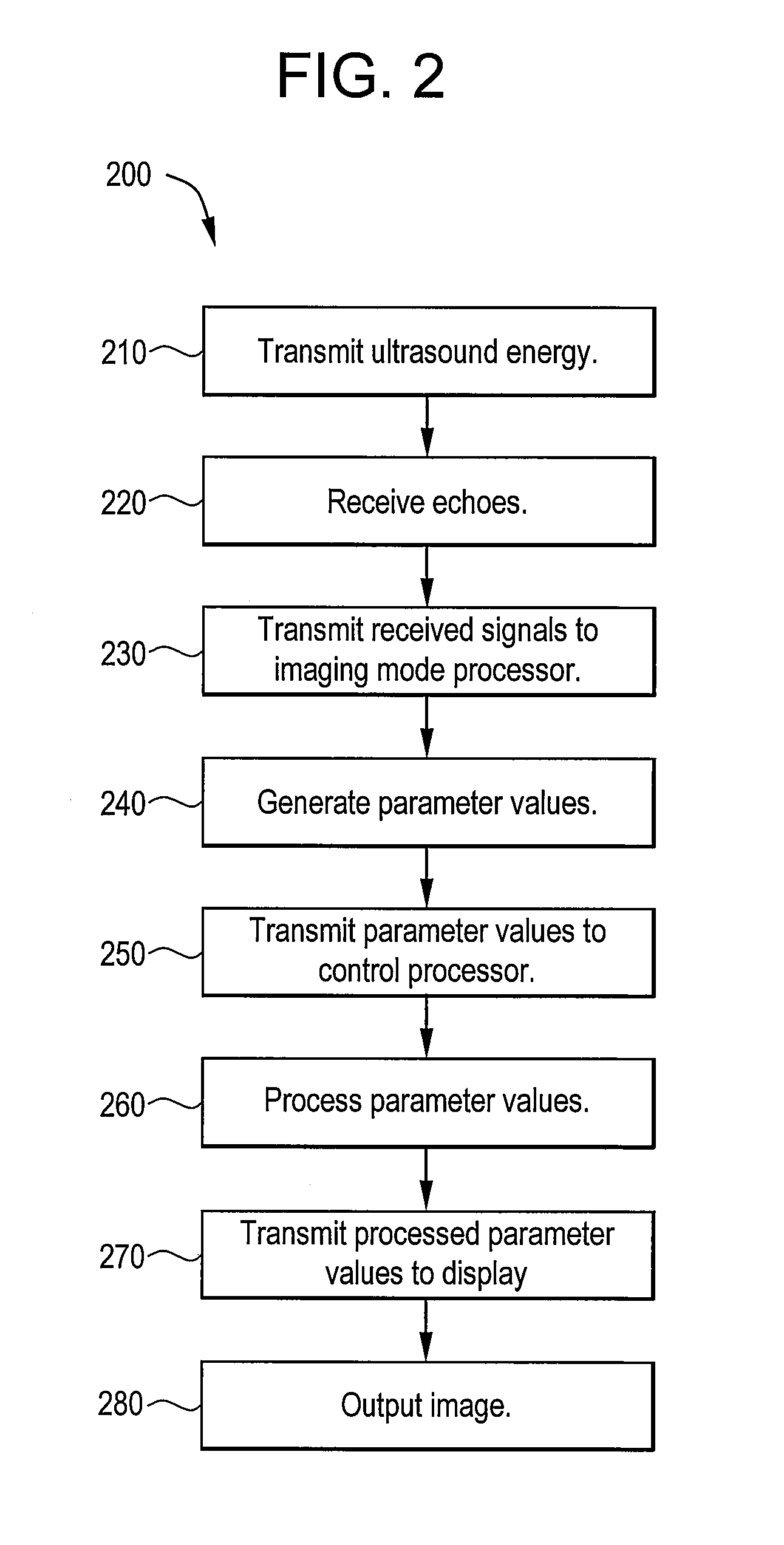Focusing of a two-dimensional array to perform four-dimensional imaging
- Summary
- Abstract
- Description
- Claims
- Application Information
AI Technical Summary
Benefits of technology
Problems solved by technology
Method used
Image
Examples
Embodiment Construction
[0019]FIG. 1 illustrates a block diagram of an ultrasound imaging system 100 used in accordance with an embodiment of the present technology. The system 100 includes a transducer 10, a front-end 20, an imaging mode processor 30, a user interface 60, a control processor 50, and a display 75. In certain embodiments, the imaging mode processor 30 and the control processor 50 may be part of a back-end system.
[0020]The transducer 10 and front-end 20 can be used together to create a beam pattern that is used to create an image. The transducer 10 can be used to transmit ultrasound waves into a subject by converting electrical analog signals to ultrasonic energy. The transducer 10 can also be used to detect ultrasound waves that are backscattered from the subject by converting ultrasonic energy to analog electrical signals. The front-end 20 can include a receiver, a transmitter and / or a beamformer. The front-end 20 can be used to create transmitted waveforms, beam patterns, receiver filteri...
PUM
 Login to View More
Login to View More Abstract
Description
Claims
Application Information
 Login to View More
Login to View More - R&D
- Intellectual Property
- Life Sciences
- Materials
- Tech Scout
- Unparalleled Data Quality
- Higher Quality Content
- 60% Fewer Hallucinations
Browse by: Latest US Patents, China's latest patents, Technical Efficacy Thesaurus, Application Domain, Technology Topic, Popular Technical Reports.
© 2025 PatSnap. All rights reserved.Legal|Privacy policy|Modern Slavery Act Transparency Statement|Sitemap|About US| Contact US: help@patsnap.com



